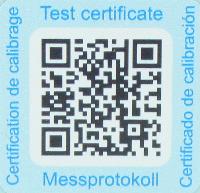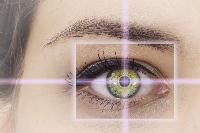What is a rotating laser
![]() Rotary lasers are used to determine heights or for indoor and outdoor alignment. Many rotary lasers now also allow inclinations to be set for slope work. Depending on the model, this is done manually or by means of a digital specification of percentage values. Rotary lasers generally differ in the laser diodes used, which affects the visibility and range of the lasers due to the different wavelength ranges (red or green laser light) and the laser power (mW). The devices are sometimes also referred to as construction lasers, inclination lasers, horizontal lasers or vertical lasers, depending on their function. Single-axis or dual-axis inclination lasers are also quite common.
Rotary lasers are used to determine heights or for indoor and outdoor alignment. Many rotary lasers now also allow inclinations to be set for slope work. Depending on the model, this is done manually or by means of a digital specification of percentage values. Rotary lasers generally differ in the laser diodes used, which affects the visibility and range of the lasers due to the different wavelength ranges (red or green laser light) and the laser power (mW). The devices are sometimes also referred to as construction lasers, inclination lasers, horizontal lasers or vertical lasers, depending on their function. Single-axis or dual-axis inclination lasers are also quite common.
Read more...
What is a calibration certificate?
 The measuring accuracy of the line lasers and rotation lasers is checked electronically before delivery. Regular checks also ensure reliability in accordance with standards and legal requirements. If inaccuracies occur during your work or during the inspection of the measuring devices, they are readjusted as part of the calibration service. You can then measure precisely and reliably again. The measurement log can be displayed using the QR code and a smartphone. The actual leveling
leveling accuracy of the device is determined and confirmed for you in a test certificate. But there's more, because you also receive valuable information about accessories, spare parts and the repair and calibration service specifically for your device.
The measuring accuracy of the line lasers and rotation lasers is checked electronically before delivery. Regular checks also ensure reliability in accordance with standards and legal requirements. If inaccuracies occur during your work or during the inspection of the measuring devices, they are readjusted as part of the calibration service. You can then measure precisely and reliably again. The measurement log can be displayed using the QR code and a smartphone. The actual leveling
leveling accuracy of the device is determined and confirmed for you in a test certificate. But there's more, because you also receive valuable information about accessories, spare parts and the repair and calibration service specifically for your device.
Read more...
The different laser colors for construction lasers
![]() With measuring and surveying devices, we are generally talking about 3 different laser types, which differ according to the laser beam color and the associated wavelength. For example, the laser types are used in line lasers and rotation lasers. These three types are the red laser beam, the green laser beam and the infrared laser beam. The wavelengths of the red and green laser beams are in the visible range, whereas the infrared laser beam is in the invisible range.
With measuring and surveying devices, we are generally talking about 3 different laser types, which differ according to the laser beam color and the associated wavelength. For example, the laser types are used in line lasers and rotation lasers. These three types are the red laser beam, the green laser beam and the infrared laser beam. The wavelengths of the red and green laser beams are in the visible range, whereas the infrared laser beam is in the invisible range.
Read more...
The classification of enclosure protection types
![]() Electrical and electronic devices have to withstand harsh environmental conditions in everyday construction applications. An international code is used to classify the procurement unit of devices or their housings. In addition to the IP, the IP protection classes (International Protection Codes) are made up of two code numbers between 0 and 9. The first digit indicates the protection an enclosure offers against contact or foreign bodies. The second digit stands for protection against moisture or water. If a code number cannot be specified, it is replaced by an X.
Electrical and electronic devices have to withstand harsh environmental conditions in everyday construction applications. An international code is used to classify the procurement unit of devices or their housings. In addition to the IP, the IP protection classes (International Protection Codes) are made up of two code numbers between 0 and 9. The first digit indicates the protection an enclosure offers against contact or foreign bodies. The second digit stands for protection against moisture or water. If a code number cannot be specified, it is replaced by an X.
Read more...
Recommendations for the safe handling of rotating lasers, line lasers and positioning lasers
 The safety regulations according to EN 60825-1 are binding for measuring devices with laser radiation. Most laser leveling devices are classified in laser class 2 or 3R. Rotation lasers and positioning lasers in particular are often classified in laser class 3R and should not be purchased without due consideration. We have derived some recommendations for you from this.
The safety regulations according to EN 60825-1 are binding for measuring devices with laser radiation. Most laser leveling devices are classified in laser class 2 or 3R. Rotation lasers and positioning lasers in particular are often classified in laser class 3R and should not be purchased without due consideration. We have derived some recommendations for you from this.
Read more...
What is a laser detector?
![]() When using laser surveying devices such as rotation lasers and line lasers, a problem always arises: With increasing brightness, whether due to sunlight or artificial light, the laser light is attenuated and at some point is no longer visible to the naked eye. This makes measurement difficult or even impossible, especially outdoors and at long distances. With a laser detector, however, the laser lines that are no longer visible can be captured and displayed again. In this way, even the greatest distances of up to 1000 m can be bridged, depending on the type of device.
When using laser surveying devices such as rotation lasers and line lasers, a problem always arises: With increasing brightness, whether due to sunlight or artificial light, the laser light is attenuated and at some point is no longer visible to the naked eye. This makes measurement difficult or even impossible, especially outdoors and at long distances. With a laser detector, however, the laser lines that are no longer visible can be captured and displayed again. In this way, even the greatest distances of up to 1000 m can be bridged, depending on the type of device.
Read more...